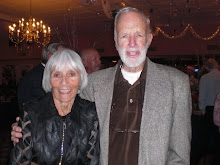This is a redo of a 2010 entry, but worth reading again.
I
have some other parts of the blog that comment on sailing in waves,
but a recent “Speed and Smarts” is about playing the waves, so
let me review what I know about Lasers in the waves.
Generally
go upwind in the smaller waves and downwind in the bigger waves, if
you have a difference on the two sides of the course without a great
deal of pressure difference.
If
there is current, then the above is reversed. When the current in
with the wind, then the waves will be less with more current and
bigger where the current is weaker. Current against the wind then
makes the waves bigger, so in either case go upwind in the bigger
waves and look the smaller ones going down wind. If you are sailing
in tidal waters, it helps to know when the tide will change.
Going
upwind with the Laser, when the waves are less than 18 inches, you
just need to power through them. Bare off a little to be sure you
are moving well. Don’t pinch. Tack in a flat spot.
Somewhere
between 18 inches and 2 feet you have to begin to think about the old
up the “up side and down the down side.” That gets you through
the wave faster and gives you a little push going down the down side.
When you do this you pump the tiller down (to leeward) to get the
bow up and rock you weight back to help lift the bow. Then on the
top of the wave, pull the tiller toward you and rock your weight
forward to help get the bow down. These moves can be quite vigorous
when the waves are steep and short . Robert Scheidt, recent great
Laser sailor moved to Stars, could be picked out of a fleet by his
radical movement.
Dellenbaugh
divides the waves up into 1) Normal wind for waves. 2) More wind
than waves. 3) Less wind than waves. 2) happens when the wind is
increasing and it gives you more power to trim tighter and sail
higher. In 3), you power up and bear off. Don’t pinch. In any
of the cases you need to be sure you are moving through the waves and
not being stopped. You need to manage them better than you
competitors. If not, see if you can tell what they are doing.
Try
and stay in clear air, tack in the flat spots, or just before the
wave so that the waves pushes you bow around, instead of stopping
you. Be careful with close maneuvering as everyone has less control.
You
need a clear air lane more with waves.
Not
all waves are the same, so you have to keep watching ahead. Some
waves can just rise up ahead of you as forces below the surface join.
Some will need powering through and some worked up and down. If you
are going to stick your bow into one, then let the boat heel and dump
as much of the water as you can, so that you don’t get all the
water in the cockpit.
If
you sail on a small lake and don’t have bigger waves, then you may
want to take some long visits to places that have them. It takes
practice working alone and then sailing beside someone so you can
make some judgment about your technique. Every day will have a
little different set of waves, so get out to the race course early
and get the rhythm down before the races start.
Dellenbaugh
says that usually the waves are the same on both tacks, but
occasionaly skewed.
My
experience is that they are almost always lopsided with one tack more
square into the wind and one more at an angle. Either the waves are
changing as they move along the bottom or the wind shifts and the
waves have not yet. If you are going square into the wave, bear off
more and take it a little on diagonal. The changing angle to the
waves will also help you pick up the wind shifts, as the waves will
take a long time to change angles.
Motorboat
waves should be worked the same. Power through the smaller, up and
down the bigger and take them at an angle if coming on square.
.


.jpg)


